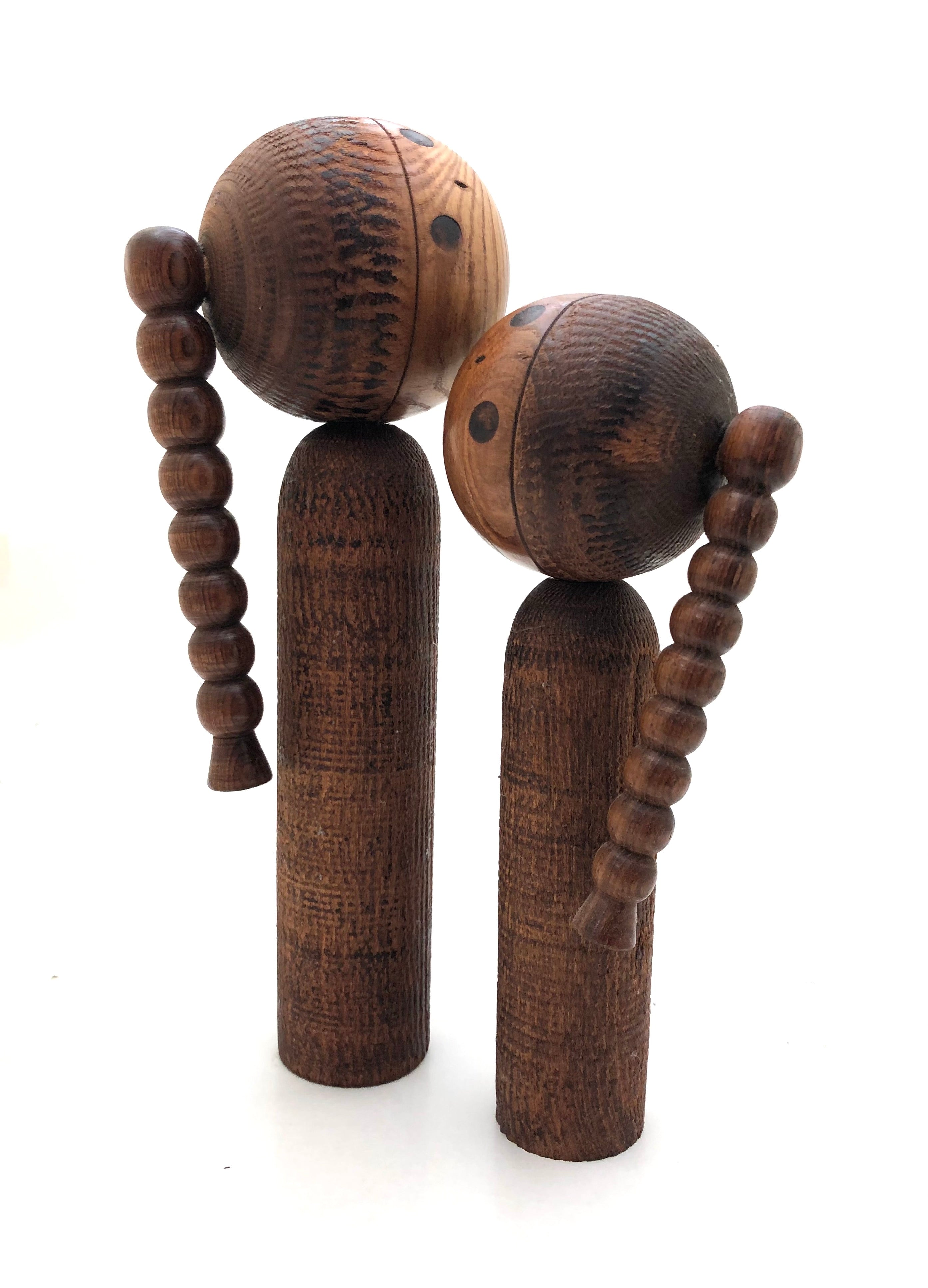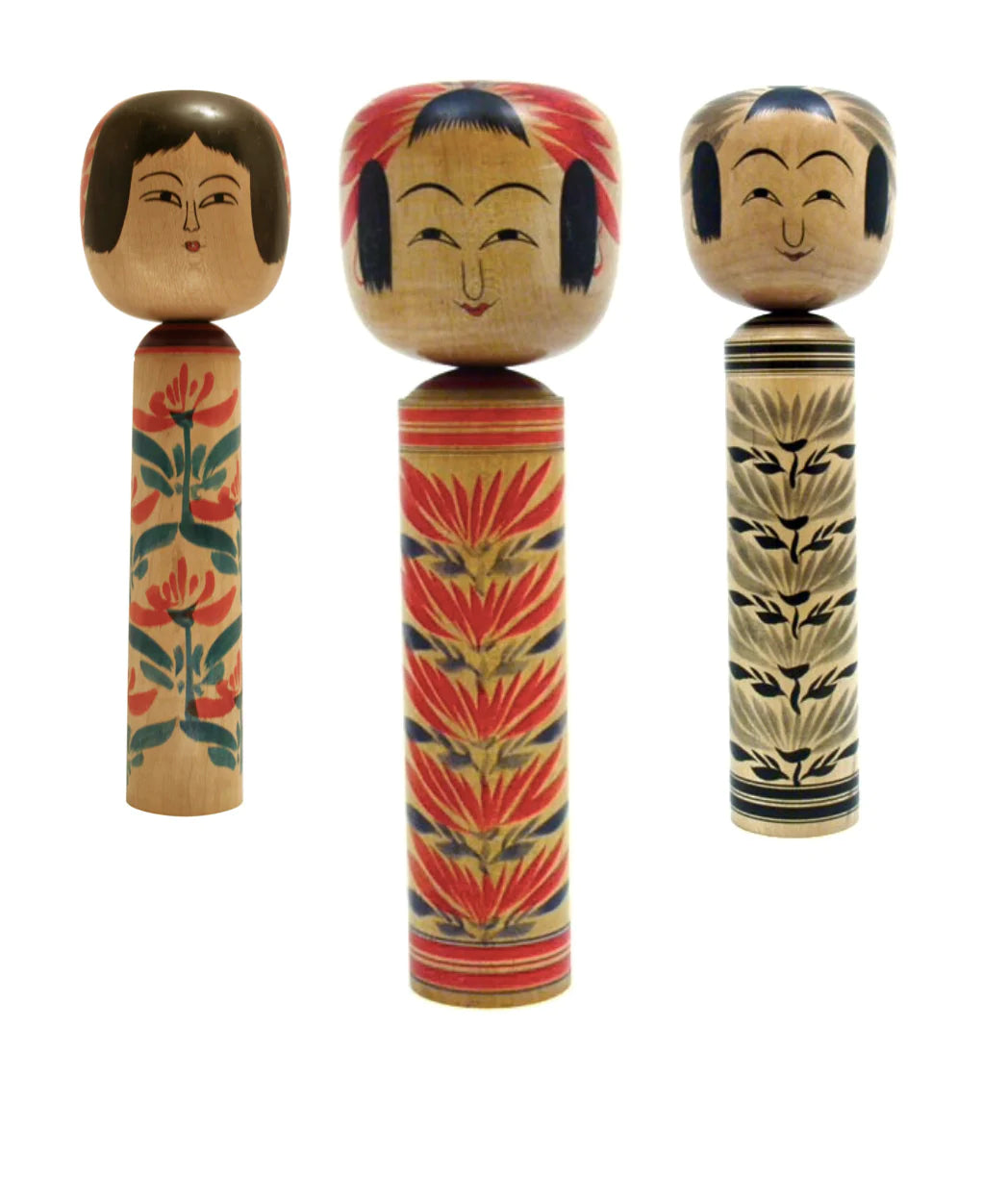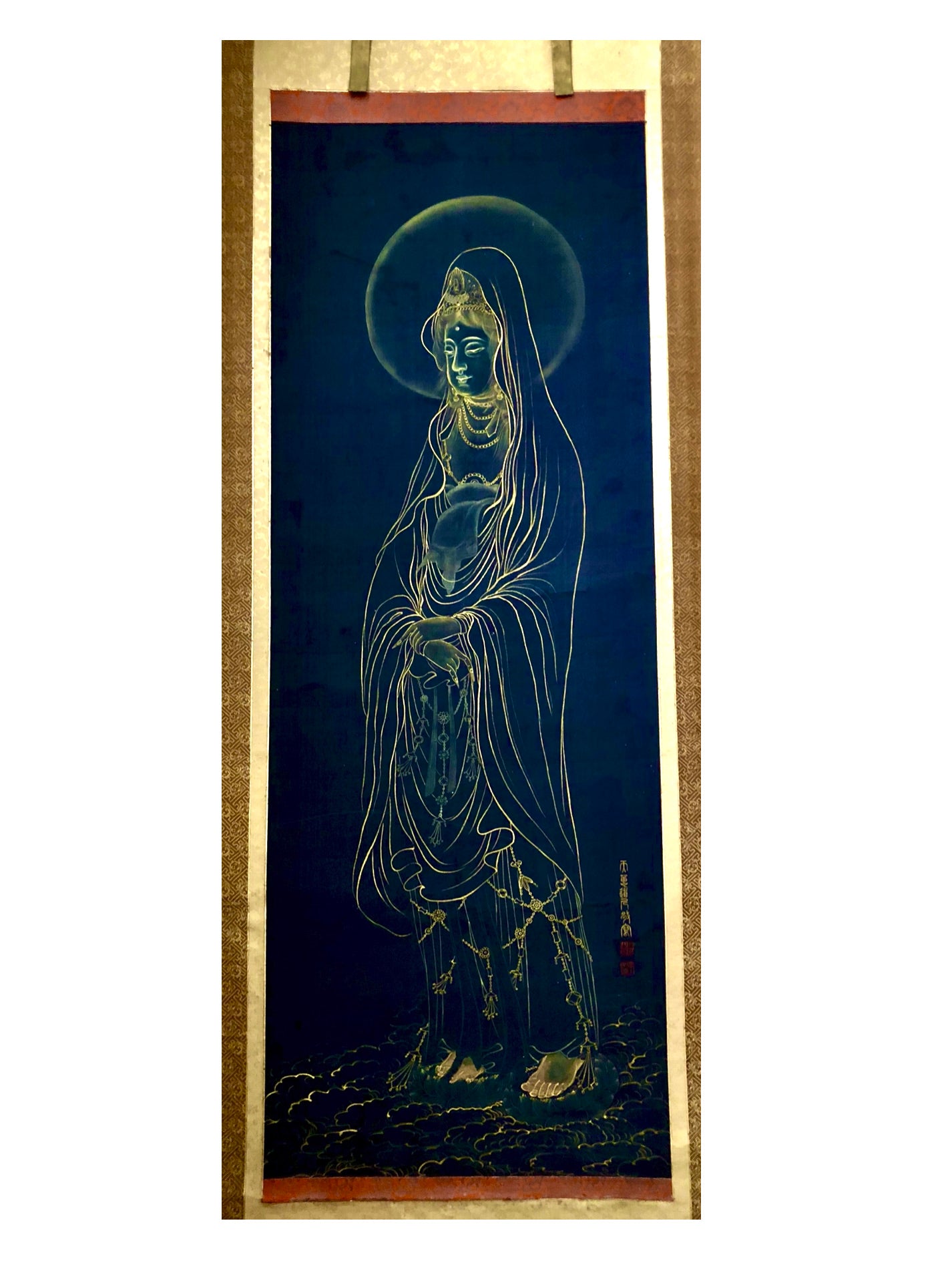
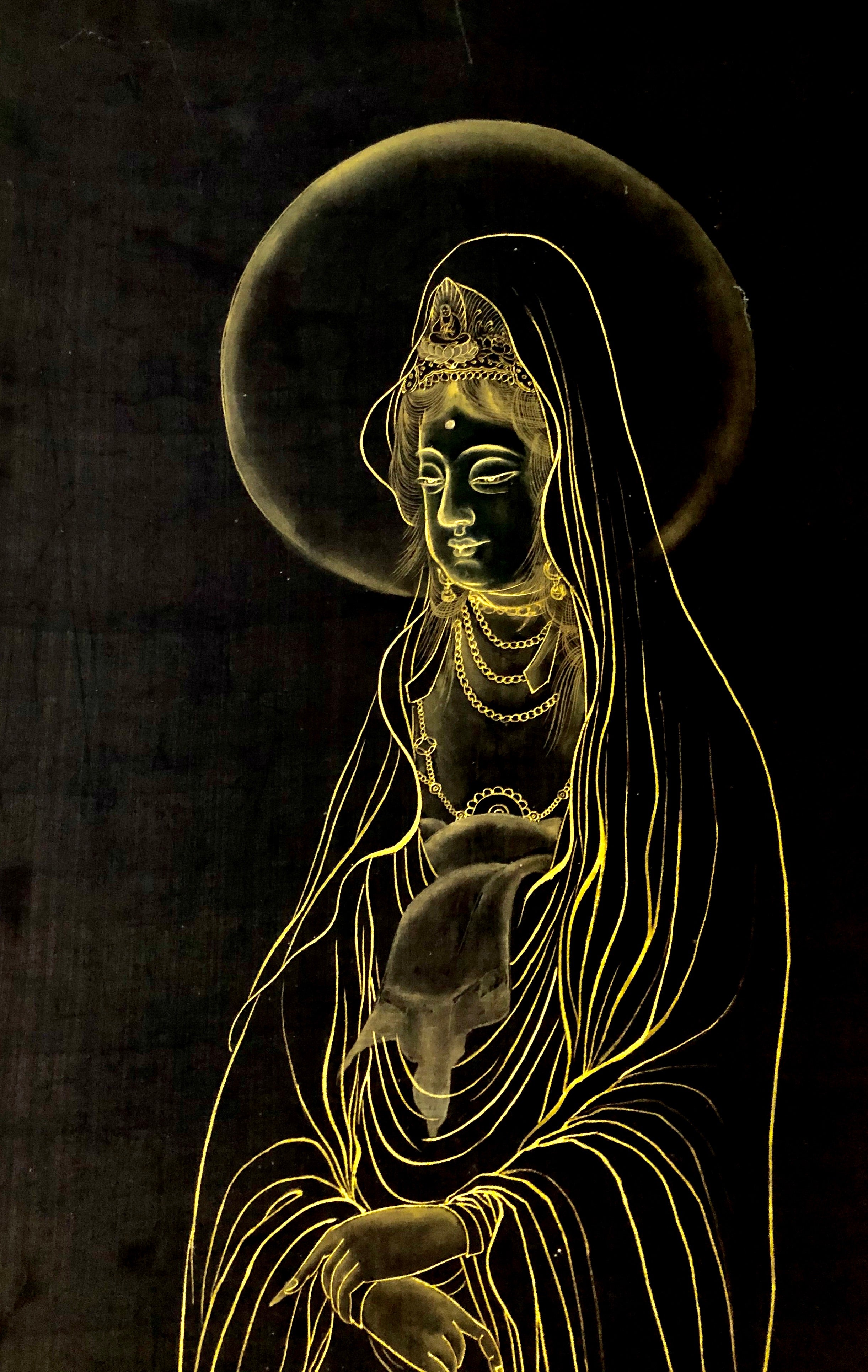
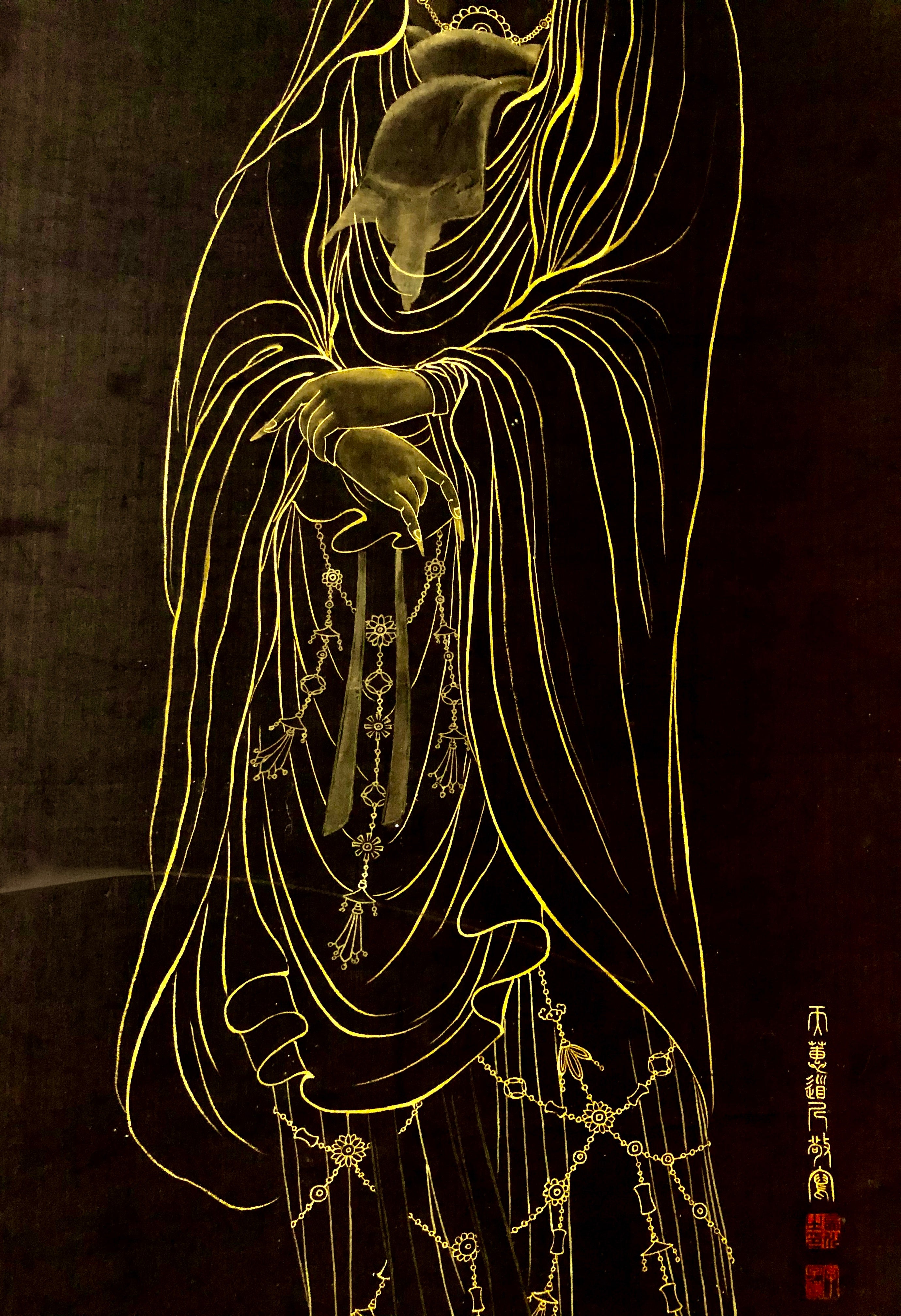
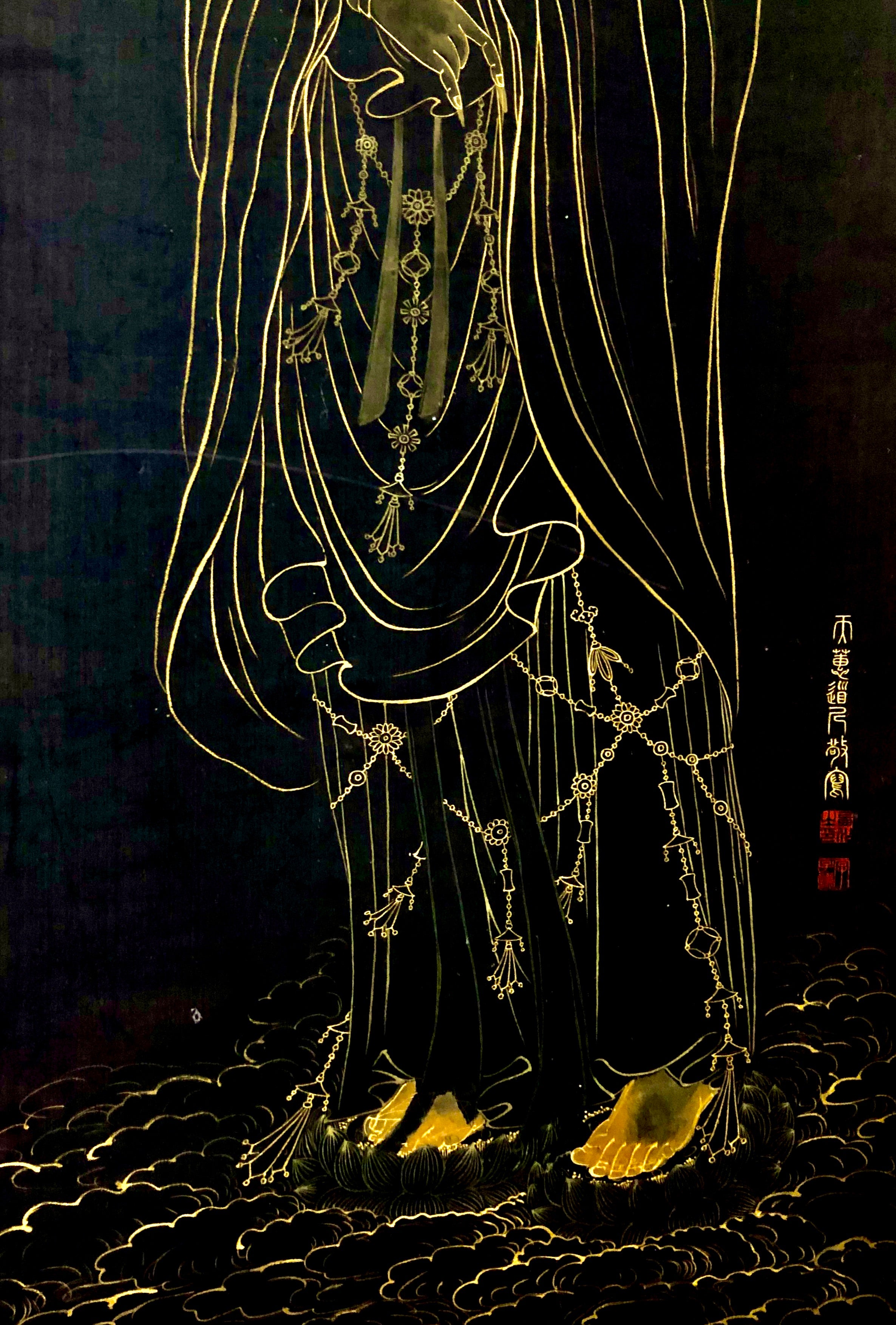
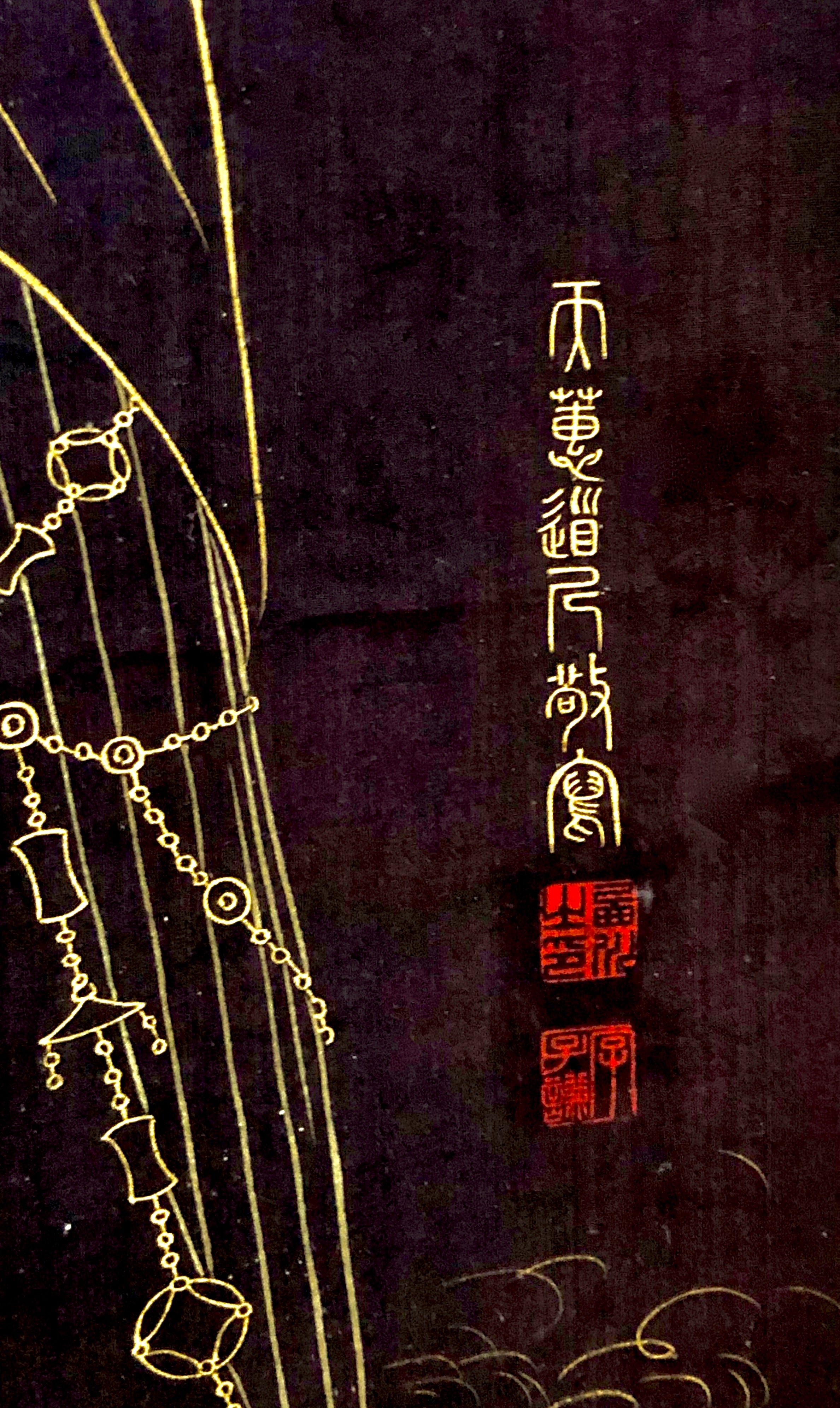
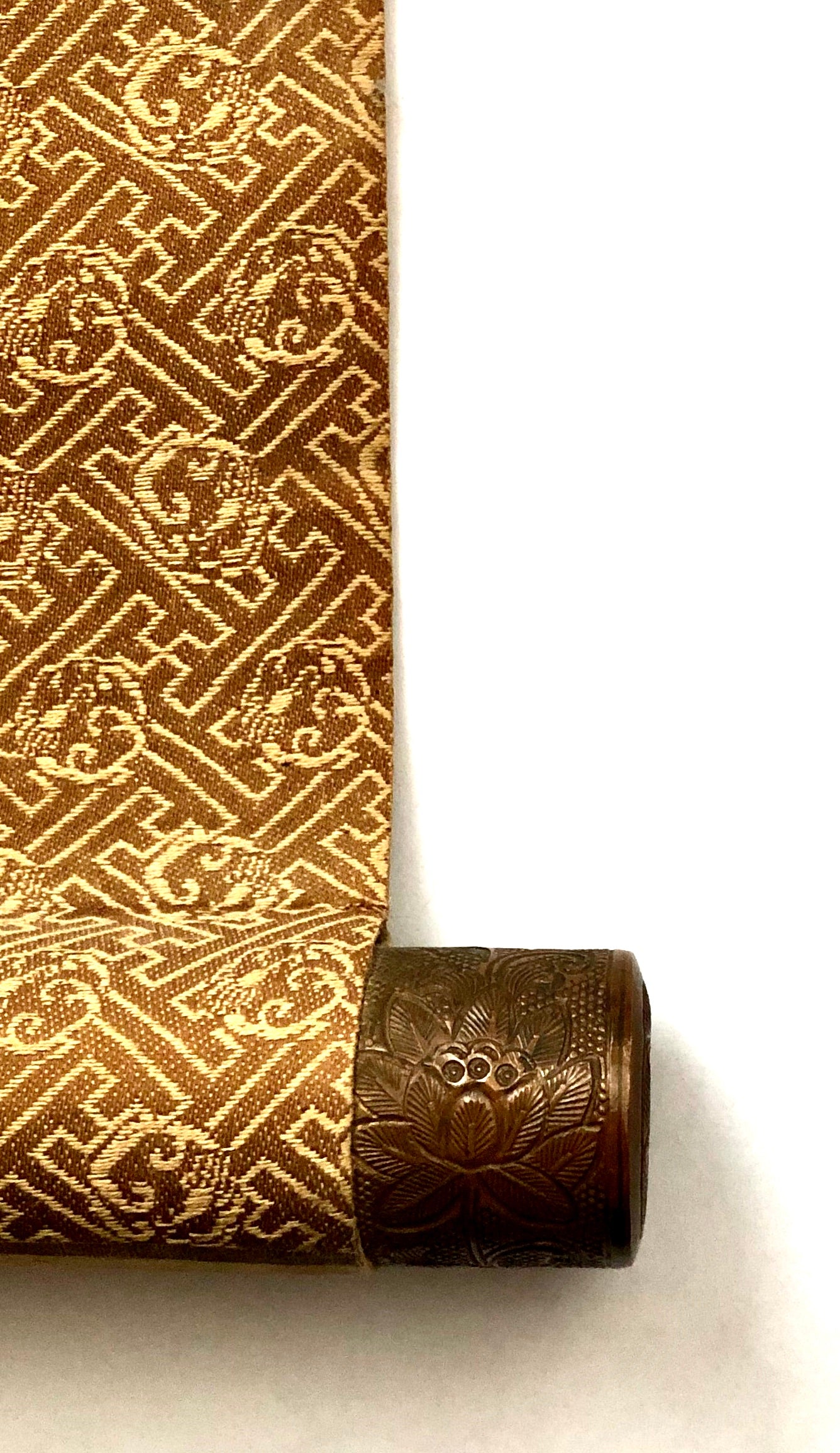
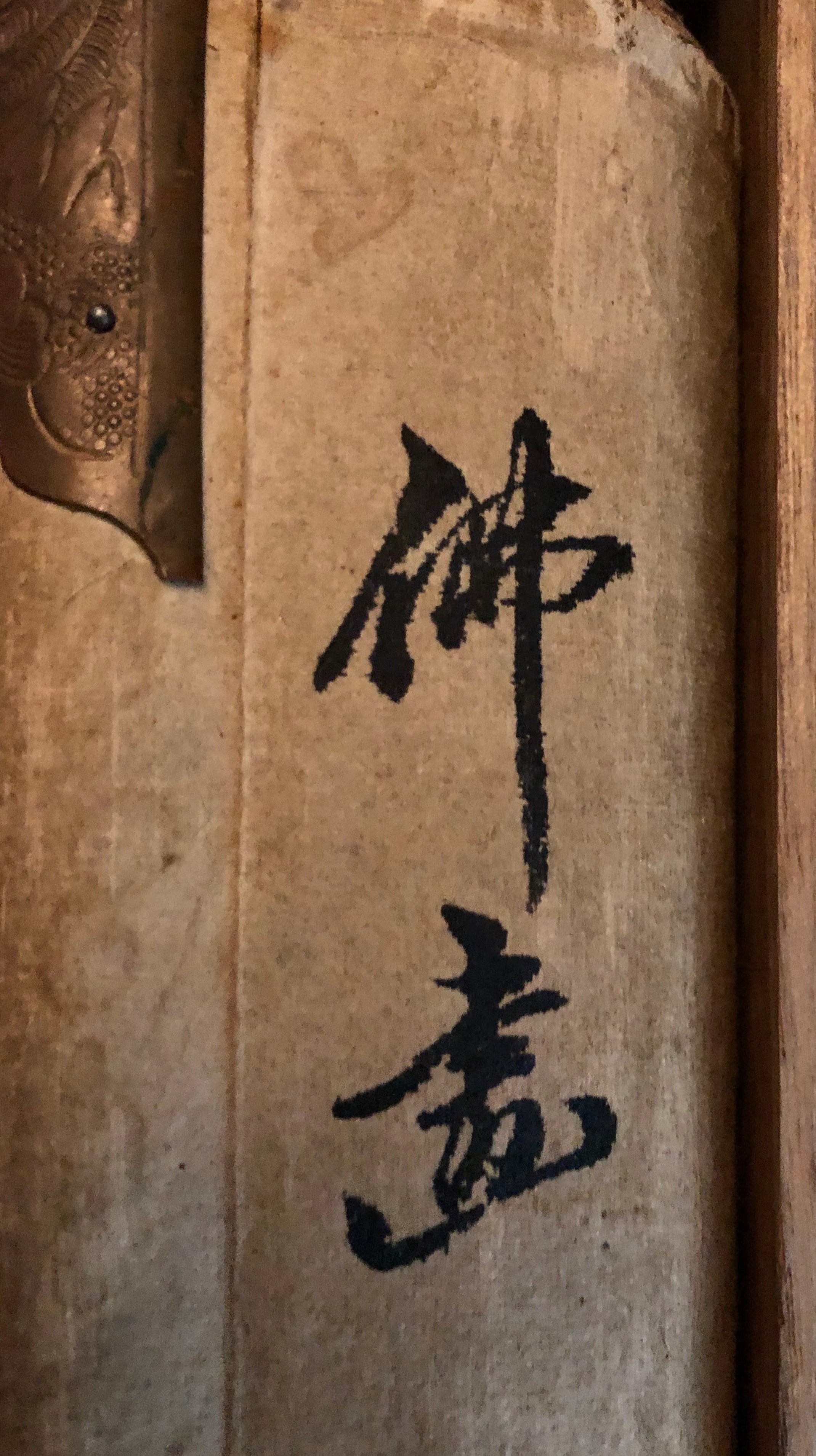
Water-Moon Avalokiteśhvara (Guanyin) | A Korean Buddhist Masterpiece
Dimensions: Overall - 22-0" x 77-0"; Image - 16-5/8" x 44-3/4"
To start off, this is a “VERY RARE AND EXQUISITE GORYEO BUDDHIST SCROLL PAINTING”. Depicted is a painting of Bodhisattva Avalokiteśhvara in typical Goryeo fashion as “Water-Moon Avalokiteśhvara.” He is shown standing on lotus pods protruding from the sea with his feet accentuated in gold. His expressive eyes look down in reverence while he stands with his hands crossed with extended fingernails. He is dressed in dazzling robes and sashes in intricate gold details throughout the figure and on his jewelry draped down his robes. This Goryeo Buddhist painting is executed with delicate details and sumptuous execution, which include exquisitely drawn garments created through the ample use of gold line-work, and illusionary effects seen in the depiction of delicately flowing veils. Here, the veils extend from Avalokiteśhvara’s crown to the pond in the lower portion of the painting filled with flowing patterns of water motifs, and his body and head are surrounded by a large luminous mandorla and a nimbus, or halo, to represent his divinity. This diminutive moon depicted around the top of his head is from where the name “Water-Moon Avalokiteśhvara” name originates. On the center of his crown is a miniature jewelry piece called a Chenrezig.
This Goryeo, Buddhist painting was made by applying color, and in this case, Indigo with Gold line-work on front of a course-grained handmade paper, (similar to canvas) which is covered on the front with a patterned gold brocade that frames the artwork. The artist created subtle effects, intensifying and contrasting with the primary indigo painted background with the figure, facial, hand, and feet outlined with gold ink to delineate the figure and to accentuate the decorative patterns of robe and jewelry. The roller bar on the bottom of the scroll has ends covered with a rare and intricately engraved copper. The interpretation of the script on the right of the figure says Tian Huidao, Buddhist nun, so we are unsure if this is an indication that she was the artist. This piece is identified on the back and translates to say Korean Buddha (hangug bucheo). The box translates as Korean Scroll (hangug seukeulol). The piece was purchased at a private auction in Kyushu in 1985.
Condition: Very Good Condition, "as is" and commensurate with age. The image itself is in excellent condition while the decorative trimming/boarders are worn and in some cases missing. The brocade framing the drawing is in like-new condition with minimal wear. Overall it is a beautiful and elegant piece of artwork in scroll form.
NOTE: Historical information related to scrolls of this type received from the Fukuoka Art Museum - During the 1594-1604 invasion, the Japanese captured and enslaved tens of thousands of Korean farmers and artisans, and took them back to Japan. It must have been evident fairly early in the campaign that Japan was not going to conquer Korea. Rather than have all of the war efforts wasted since the Japanese were not able to conquer Korea, the Japanese began to capture and enslave Koreans who might be useful to Japan. Scholars and artisans such as potters and metalworkers were particularly prized. The most visible influence these enslaved Koreans had in Japan, however, was on Japanese ceramic styles. Between the examples of looted ceramics taken from Korea, and skilled potters brought back to Japan, Korean styles and techniques had an important impact on the Japanese arts.
We were additionally informed by a Curatorial Assistant at the Fukuoka Art Museum that a number of Kyushu Pottery owners gained the benefits of the relocated Korean artists and what they brought to their new country of residence, many of which were just made captive and not allowed to bring anything from their homeland. The Buddhist images created at the time reflect the strength of the Pure Land tradition, which promises believers rebirth in paradise. The works feature specific Buddhas and Avalokiteśhvara who help followers spread and inform the public about the Buddhist religion. The tradition has only re-emerged from obscurity in the past few decades, as researchers have begun to identify specific visual characteristics that unite the works. These features include delicately painted garments, saturated mineral pigments accented with gold, and illusionary effects such as transparency. Although these similarities are now well documented, there is still much to discover about the paintings’ artistic methods and cultural context.
Objects from those who brought objects with them, such as religious scrolls of this quality, were later sold at private sales in Kyushu, many of which were believed to have been in the possession of Japanese citizens who hosted Korean artists and pottery craftsmen brought to Japan through this invasion and relocation. Through centuries of warfare and loss, most of the paintings left the Korean Peninsula and now survive in large part in Japanese temple collections.
So, we as the seller, as well as the Fukuoka Art Museum Curatorial representative, are unsure as to the specific date of this piece, particularly because the piece is signed and has seals on the front in Korean, but on the back of the scroll is written in Japanese script. So this brings the date into question as to whether it was brought into Japan by a Korean artist that was recruited during the annexation into the Empire of Japan and then further identified by the Japanese sponsor who was gifted or became the owner of the piece upon entry to the country.
If you have questions or wish to make a counteroffer please go to our contact us page.
Return Policy
Our antique/vintage pieces are identified/described and professionally photographed, and considered, “as is”, therefore all sales are final. Read our full refund and return policy.


